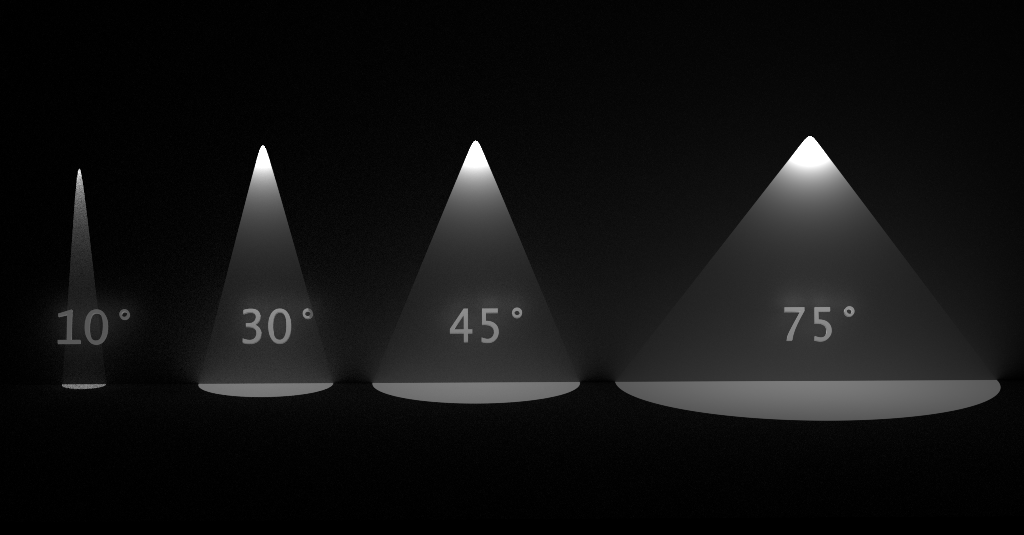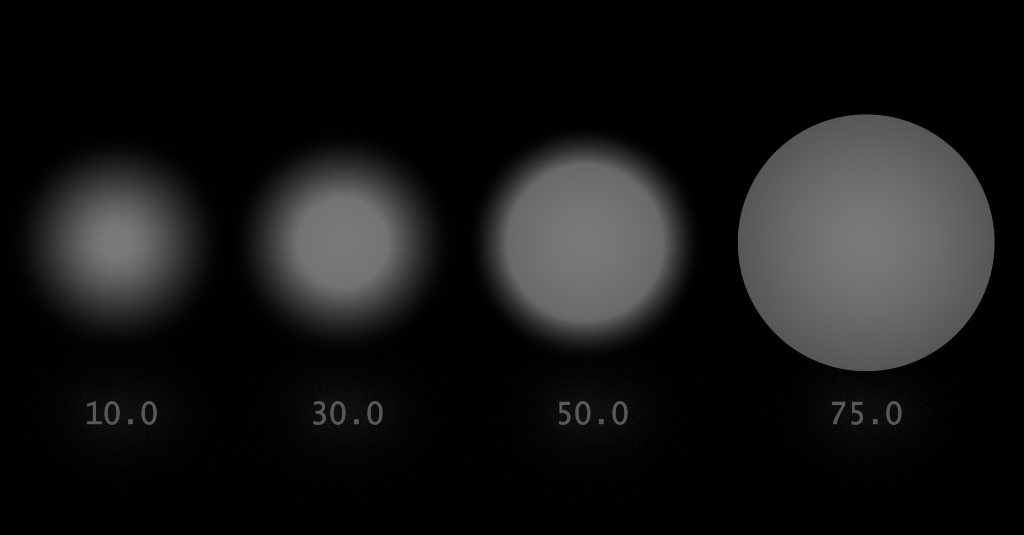Spot Light
The spot light simulates a cone-shaped beam of light, such as a head light or flash light. The cone of light is emitted evenly in a given direction from a single point, widening gradually towards where the beam is aimed.
The intensity of a spot light can be measured in Watts or Lumens. For details on the intensity controls, see the Common Physical Light Properties section.
In addition to common light properties, there are custom properties applied to spot lights only. You can find them in the Spot Light section of the RPRPhysicalLightShape tab.
Visible
The Visible parameter controls the visibility of the light source for a camera. If visible, the light source shows in the final render.
Note that enabling and disabling this option does not affect the lighting in the scene.
Inner Cone Angle
The Inner Cone Angle parameter controls the angle of full light intensity in the cone of light. A narrower inner cone angle produces a smaller spot, while a wider angle yields a broader spot.
The parameter value is an angle between 0 and 179 degrees, and cannot be greater than the Outer Cone Angle value. Note that 179 degrees is a soft limit; you can increase this limit by typing a greater value in the input field.

Outer Cone Falloff
The Outer Cone Falloff parameter controls the penumbra outside the projected spot where the light begins to fall off from its full intensity.
Smaller values produce a narrow falloff region and give a thin penumbra area around the light spot, while increasing this value makes the falloff region wider and the spot edges softer and more blurred.
The parameter value is an angle between 0 and 179 degrees. Note that 179 degrees is a soft limit; you can increase this limit by entering a greater value in the input field.
